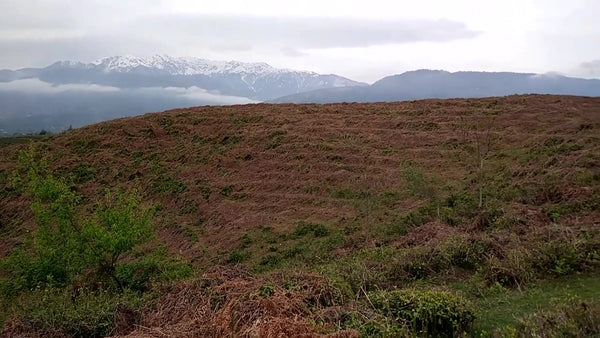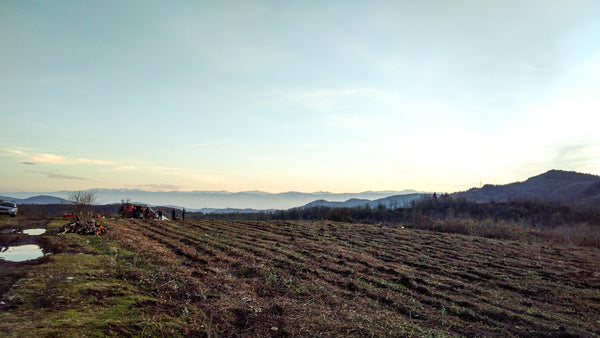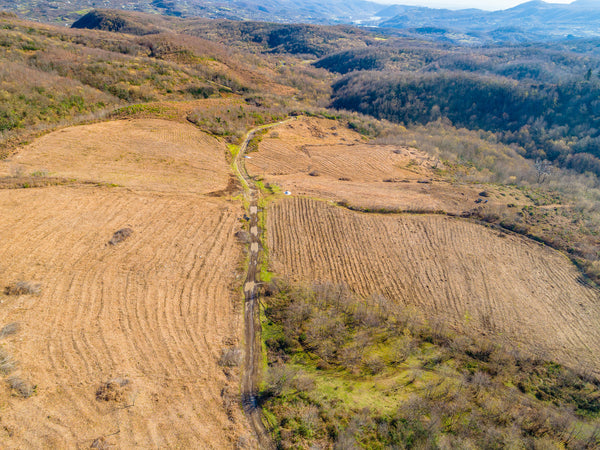If you have been following us, you have heard a lot that there’s a lot of work and little harvest at the moment since the bushes need time to recover. But maybe you haven’t really dug deep into the story of how we started? So, here’s an overview of how we turned one of our plantations (there’s 3), Renegade Estate, from a complete jungle to a working plantation.
Also, during the time of rehabilitation, we got so many different suggestions on what to do and what not to do. If you ever want to rehabilitate a tea plantation, then here’s what worked for us. It might not work in another climate, so you need to take into account the specifics of your country’s climate and soil conditions.
1. Choosing the plantation
We are participating in a program curated by the Government of Georgia, which means that all of our plantations have a long term lease with the government. When we first applied to this program no one really believed us. Well, because a bunch of Estonians growing tea in Georgia? How likely is that? So can’t really blame them for being a bit sceptical :) Once we flew to Tbilisi, the coordinating organization APMA understood that we are serious with our plans.
Ok, but choosing a plantation. I’m quite sure you are thinking that well we got a list of plantations which were up for rent and coordinates on where to find them, yes? No, unfortunately not. The instructions to find the plantations were literally just that you can find them in Western Georgia. Uhm, ok? So we started to drive around Western Georgia..
We finally located the plantations with the help of Google Maps - on the satellite view the rows are so clear that you can easily pinpoint where a tea plantation is located. Even if it has been abandoned for 30 years, the rows are really clear. And once you have seen an abandoned tea plantation, then you become a professional at spotting them from the car window - the amounts of fern give it away. At least in Georgia, wherever there are ferns, there’s also tea. Little did we know back then that it will once be our biggest problem.

This is how an abandoned tea plantation looks like in autumn
You can read about in more detail about our initial adventures about finding the plantations from here.
2. Understanding the conditions - if the plants are healthy and strong
So, how does an abandoned tea plantation look like? Nothing like a tea plantation :) The fields here in Georgia are a mixture of ferns, a lot of blackberries, a lot of different other bushes which 100% have thorns on them and then some small trees like acacias and hazelnuts. So, the whole thing is filled is a tight jungle, armoured with thorns. We understood that after each of us had ripped up 3 pairs of jeans :) But there is no other way actually, you have to get in there somehow to understand how much of the area has tea bushes underneath all of these weeds and what the landscape is in general.
Here's a video from the early days when we were scouting for the plantations, we had a fair share of injuries. Here's one of the funny ones that was caught on tape :D Priit was fine luckily :)
Other than checking if the plants are looking good, we were looking for places that “feel” right. We didn’t really have a lot of conditions, because we didn’t know much about the right conditions. We were sure that the fields shouldn’t be on flat land, we wanted the plantation to have a good mixture of landscapes so the bushes would be protected from the winds and would have proper water flow. Mostly, though, we relied on our gut feeling. Because when it is a huge jungle, you can’t really grasp the whole picture of how the plantation would eventually look like. So, it either feels right or it doesn’t.
Finally, after choosing the plantations that felt right, we, of course, had some soil probes done as well to make sure that it is actually possible to make a healthy plantation there.
3. Cleaning it up
So, when the plantations were chosen and paperwork was done (the paperwork was quite easy and straightforward, only not with our third plantation, that one was a nightmare), it was time to start the works. We consulted with different experts from Georgia and abroad and understood that the only option is to cut everything down - the fern, blackberries and tea bushes as well. Another recommendation from the local village people was to burn everything, we chose to ignore :)
Although cutting everything to the ground seemed daunting at the beginning, we did understand that it is not possible to clean the bushes out one by one because they were taken over by thorny “friends”. And even if it was possible in some areas, then the shoots of the bushes had been growing sideways under all these weeds and they were just too thin and weak to ever be productive.
We left as many trees as possible for the ecosystem to be healthy and to keep some shade to the tea bushes. We also ploughed the land between the rows to ventilate the soil so the nutrients could move more easily and to slow down the start of the weeds.

This is plot 3. The first pace where we did the ploughing works, it seemed too rough and extreme for the land, so with other parts we switched to lighter ploughing. Although it seemed better for the land at the time, then this plot has now the least amount of weeds and is also one of the best productivity-wise.
Here’s a video how we did it:
4. Waiting
And then we played the waiting game....The field was brown, nothing was growing for quite some time..Every week we walked on the fields and tried to find a single sign of life… nothing.

Second part is here...
Written by Kristiina
